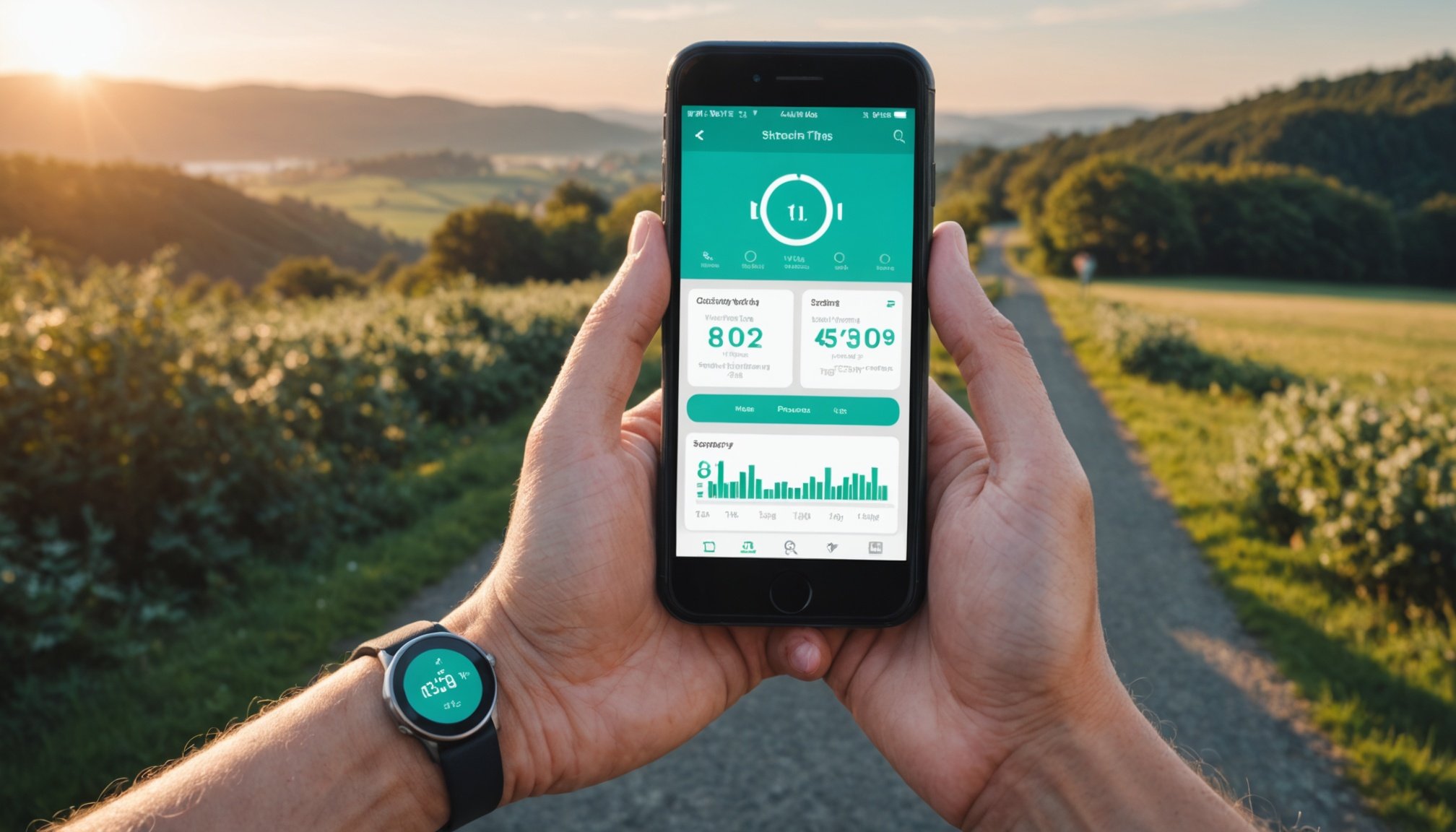Unlocking Wellness: Proven Tips for Optimizing Fitness Tracker Performance in Your Health Journey
In the era of smart living, fitness trackers have become an indispensable tool for anyone serious about their health and wellness. These wearable devices offer a wealth of data that can help you optimize your fitness routine, monitor your health, and make informed decisions about your lifestyle. Here’s how you can get the most out of your fitness tracker and unlock the full potential of your health journey.
Understanding Your Fitness Tracker
Before we dive into the tips and tricks, it’s essential to understand what your fitness tracker can do and what it can’t. Modern fitness trackers are more than just step counters; they are sophisticated devices that can track a variety of health metrics.
Topic to read : Discover the hidden benefits of intermittent fasting for optimal brain health
Key Metrics Monitored by Wearables
Fitness trackers like the Apple Watch, Fitbit, and Garmin can monitor critical metrics such as:
- Heart Rate: Continuous heart rate monitoring helps you gauge your exercise intensity and overall cardiovascular health[3].
- Sleep Quality: Tracking your sleep patterns can help you identify areas for improvement and ensure you’re getting the rest you need[3].
- GPS: For runners, cyclists, and other athletes, GPS tracking is crucial for measuring distance, speed, and route[4].
- Stress Levels: Some devices can even monitor your stress levels through heart rate variability (HRV) and other indicators[3].
Setting SMART Goals with Your Fitness Tracker
One of the most effective ways to use your fitness tracker is by setting Specific, Measurable, Achievable, Relevant, and Time-bound (SMART) goals. Here’s how you can do it:
Topic to read : Unveiling the benefits of eco-friendly workspaces on employee mental health and well-being
Why SMART Goals Matter
SMART goals are more than just a buzzword; they are a proven method for achieving success. According to a study by the American College of Sports Medicine, 70% of people who track their fitness goals with wearable devices are significantly more likely to reach those goals compared to those who don’t[5].
Example of Setting SMART Goals
- Specific: Instead of saying “I want to be healthier,” say “I want to walk 10,000 steps every day.”
- Measurable: Use your fitness tracker to track your daily steps.
- Achievable: Start with a goal that is realistic based on your current activity level.
- Relevant: Align your goal with your overall health and wellness objectives.
- Time-bound: Set a specific timeframe, such as “I will achieve this goal within the next 3 months.”
Optimizing Your Training with Real-Time Data
Your fitness tracker provides real-time data that can help you optimize your training sessions. Here’s how you can use this data to your advantage:
Heart Rate Monitoring
Heart rate monitoring is a powerful tool for gauging the intensity of your workouts. According to Gordan, “Steps aren’t the best measurement of physical activity. It does not take into account intensity of activity and is not effective for forms of non-weight-bearing activity (i.e., cycling).” Using a heart rate monitor can help you ensure you’re pushing yourself hard enough during workouts and recovering adequately between sessions[1].
Case Study: Using Data to Improve Performance
Consider a runner training for a marathon. After analyzing their DNA test results and wearable data, they discover they have a genetic predisposition to slower recovery and a higher risk of soft tissue injuries. By adjusting their training to include more recovery days and focusing on strength and flexibility exercises, they can reduce their injury risk and improve performance sustainably[3].
Maximizing Battery Life of Your Fitness Tracker
Battery life is a critical factor when choosing and using a fitness tracker. Here are some tips to help you get the most out of your device’s battery:
Types of Batteries Used in Wearables
Fitness trackers primarily use lithium-ion or lithium-polymer batteries. Lithium-polymer batteries are lighter, more flexible, and offer superior safety features, making them a preferred choice for many wearable devices[2].
Practical Tips for Extending Battery Life
- Reduce Screen Brightness: Lowering the screen brightness or using automatic adjustment features can help conserve power.
- Turn Off GPS and Continuous Monitoring: Disable GPS and continuous monitoring functions when not in use to significantly extend battery life.
- Maintain Battery Level: Keep the battery level between 20% and 80% to avoid deep discharges or prolonged full charges.
- Update Firmware: Regular firmware updates can improve device performance and battery management[2].
Comparing the Best Fitness Trackers for Battery Life
When it comes to choosing a fitness tracker, battery life is often a top consideration. Here’s a comparison of some of the best fitness trackers for battery life:
| Device | Battery Life | Key Features |
|---|---|---|
| Garmin Enduro 3 | Up to 36 days | Best-in-class battery life, GPS, heart rate monitoring, solar charging[4] |
| Amazfit T-Rex 3 | Up to 27 days | Excellent battery life, bright AMOLED display, dive and military certified[4] |
| OnePlus Watch 2 | Up to 7 days | Fast charging, dual chipsets for power management, health sensors[4] |
| Suunto Race | Up to 12 days | Bright AMOLED display, heart rate, SpO2, and ECG sensors, offline maps[4] |
| Apple Watch | Up to 18 hours | Comprehensive health tracking, GPS, heart rate monitoring, integration with Apple ecosystem[4] |
Leveraging Wearable Technology for Holistic Health
Wearable technology goes beyond just tracking physical activity; it can also provide insights into your mental health and overall wellness.
Monitoring Sleep Quality
Sleep tracking is a crucial feature of many fitness trackers. By monitoring your sleep patterns, you can identify areas for improvement and ensure you’re getting the restful sleep you need. For example, if your wearable data shows suboptimal deep sleep patterns, you can adjust your bedtime routine or environment to improve your sleep quality[3].
Managing Stress Levels
Wearable devices can also monitor your stress levels through HRV and other indicators. This data can help you identify periods of high stress and take proactive steps to manage it, such as practicing deep breathing exercises or taking short breaks throughout the day[3].
Integrating Wearable Data into Your Daily Routine
To get the most out of your fitness tracker, it’s important to integrate the data into your daily routine.
Real-Time Feedback
Wearable devices provide real-time feedback that can guide your decision-making. For instance, if you receive a notification that you’re just 800 steps away from your daily goal, it can motivate you to take a short walk to reach your target[5].
Combining Data with Performance Metrics
Platforms like Vorecol Performance allow you to blend data from your wearable with performance metrics in the cloud. This integration enables you to refine your strategies in real-time, making your journey toward success more manageable and rewarding[5].
Overcoming Common Challenges
While wearable technology offers numerous benefits, there are also some common challenges users face.
Difficulty in Integrating Data
One of the main challenges is integrating the data into daily routines. To overcome this, set specific goals and ensure that your wearable is synced with other health and performance tracking tools you use[5].
Maintaining Motivation
Another challenge is maintaining motivation over time. To stay motivated, use the real-time data from your wearable to set achievable milestones and celebrate your progress along the way.
Unlocking the full potential of your fitness tracker involves more than just strapping it on your wrist; it requires a strategic approach to using the data it provides. By setting SMART goals, optimizing your training with real-time data, maximizing battery life, and integrating wearable data into your daily routine, you can transform your health and wellness journey.
As Gordan aptly puts it, “I would encourage engaging in weekly activities that will increase heart rate for a continuous period of time.” By aligning your training with your body’s unique needs and leveraging the power of wearable technology, you can achieve your health and fitness goals with unprecedented precision.
So, the next time you lace up your shoes for a workout or approach your daily tasks, remember that every step counts—especially when backed by the right technology. Continue reading and exploring how wearable devices can enhance not just your health but also your career trajectory and overall life. With the right tools and mindset, you can unlock your body’s potential and achieve a healthier, more vibrant life.











